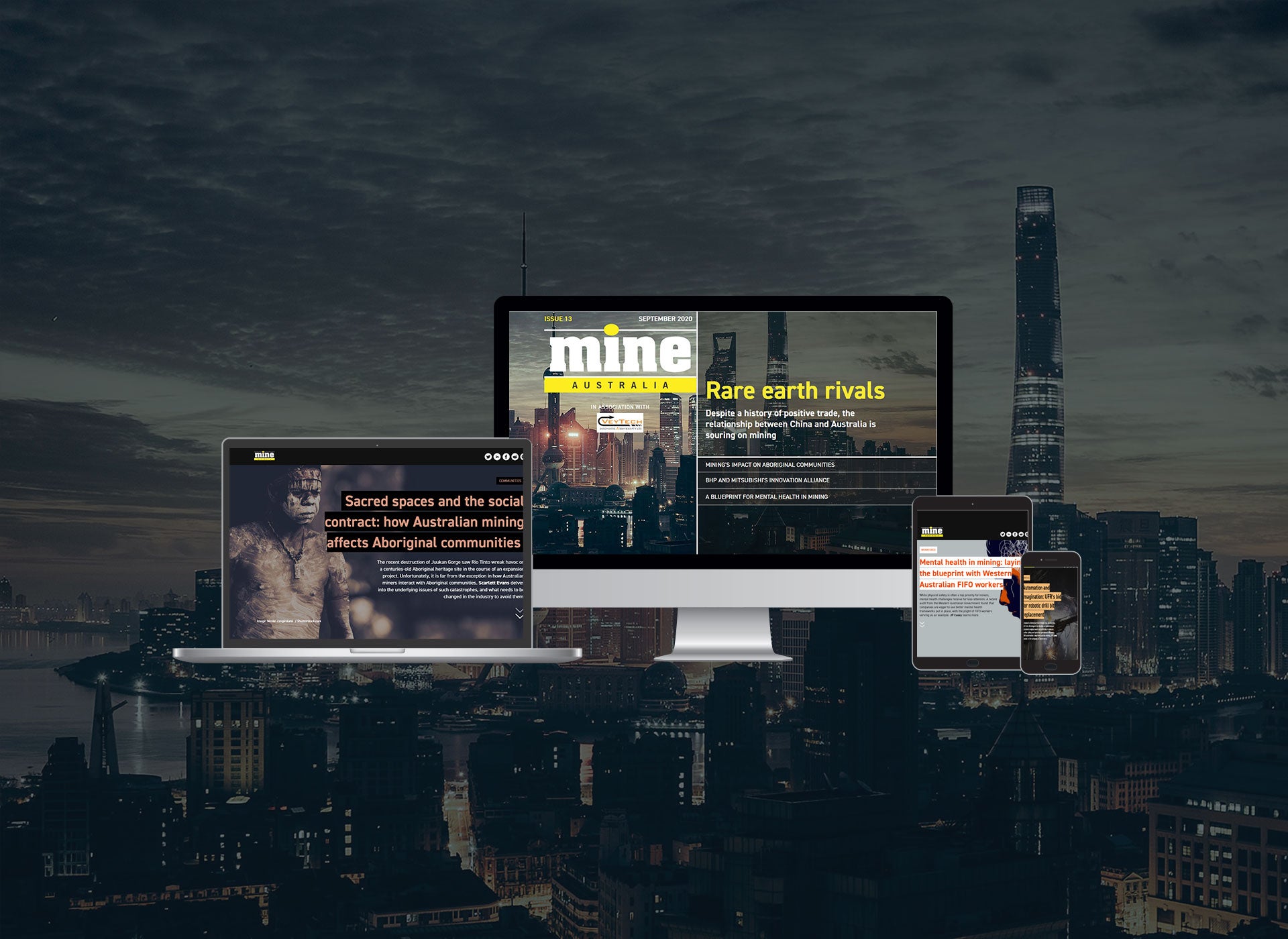
Australia-based Cardinal Resources recently announced that it had entered into a bid implementation agreement with the Chinese miner Shandong Gold Mining. As Australia sets out to become a rival rare earths hub to the Asian goliath, we investigate China’s stake in the Australian mining sector.
We also delve into mining’s impact on Aboriginal communities, profile Australian Potash’s $665m project, and paint a picture of tin mining in Australia today.
Lastly, we examine BHP and Mitsubishi’s investment in the Queensland Resources Centre of Excellence, talk to Universal Field Robotics about their autonomous drillbit replacement, round up the best universities in the country for mining, and find out whether a new audit could improve mental health in the mining sector.
Whether you are on a desktop, tablet or smartphone, you can read the magazine for free online, and join the conversation on Twitter.

In this issue
All change: threats to China’s stake in Australian mining
China and Australia have enjoyed a rich history of mining deals, with iron ore and money flowing freely between the countries. However, political pressures and the uncertainty left in the wake of the Covid-19 pandemic have threatened this relationship. JP Casey finds out more.

Sacred spaces and the social contract: how Australian mining affects Aboriginal communities
The recent destruction of Juukan Gorge saw Rio Tinto wreak havoc on a centuries-old Aboriginal heritage site in the course of an expansion project. Unfortunately, it is far from the exception in how Australian miners interact with Aboriginal communities. Scarlett Evans delves into the underlying issues of such catastrophes, and what needs to be changed in the industry to avoid them.

An inside look at Australian Potash’s Lake Wells fertiliser mine
Australian Potash’s A$665m Lake Wells sulphate of potash project in Western Australia is said to be the largest resource of its kind in the country. As the mine edges closer to production, with the environmental regulator set to make a final decision by September, Heidi Vella talks to company CEO and managing director Matt Shackleton to find out more.

What does the future look like for Australian tin?
In June, Australia’s largest tin producer, Metals X, announced plans to increase production and extend mine life by a decade at the Renison Tin Operation in Tasmania. Matthew Hall looks at this project and others to find out what the future might hold for the tin mining sector.

Million-dollar alliance: how BHP and Mitsubishi aim to fund innovation in Queensland
The town of Mackay in Queensland opened the doors of its newly built Resources Centre of Excellence at the end of July. Scarlett Evans speaks with Tony Caruso, chair of the centre, about the facility and how it is working to keep the state at the forefront of rapid technological changes.

Automation and imagination: UFR’s bid for robotic drill bit replacement
Brisbane’s Universal Field Robots has answered a call from Antofagasta to develop an autonomous solution to replace worn-out drill bits, to ensure worker safety and optimise operational efficiency. With automation a key trend across mining, JP Casey speaks to the company to learn more.

Australia’s great mining universities
This year’s QS World University Rankings – renowned for its listings of global university courses – included five Australian universities in the top ten mineral and mining engineering courses. Scarlett Evans rounds up the best to profile their offerings, and how they’re keeping up with changing times.

Mental health in mining: laying the blueprint with Western Australian FIFO workers
While physical safety is often a top priority for miners, mental health challenges receive far less attention. A recent audit from the Western Australian Government found that companies are eager to see better mental health frameworks put in place, with the plight of FIFO workers serving as an example. JP Casey learns more.

Preview – MINE Australia November 2020
The Chamber of Minerals and Energy (CME) of Western Australia recently raised concerns that an additional 8,000 skilled workers will be needed over the next 12-18 months. How will the state meet these demands, and can it be done locally?
We also speak to the University of Sydney about a report on zero-emission copper mines, take a closer look at what the Grosvenor explosion means for safety at the longwall, and examine a report about the key risk factors Australian mining faces.
We also delve into the costs of maintaining production, profile controversial mining magnate and politician Clive Palmer, assess BHP’s environmental efforts, and chart the vital moments in iron ore’s ascension to A$100bn in export value.



